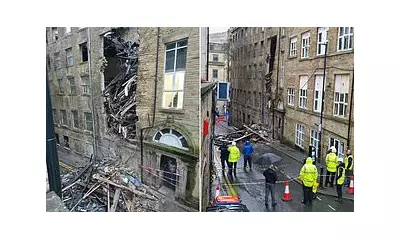
Saudi Arabia is embarking on one of the most ambitious urban development projects in human history - a revolutionary linear city stretching 170 kilometres through the desert, designed to challenge everything we know about modern urban living.
The Vision Behind The Line
Part of the colossal £1.1 trillion Neom development in northwest Saudi Arabia, The Line represents Crown Prince Mohammed bin Salman's radical vision for the future. This mirror-clad marvel will house nine million residents within a mere 34 square kilometres, creating unprecedented urban density while preserving 95% of the surrounding natural landscape.
Revolutionary Urban Design
What makes The Line truly extraordinary is its linear configuration. The city will consist of two parallel skyscrapers running alongside each other for 170km, reaching 500 metres in height - taller than the Empire State Building. Between them lies a car-free urban space where residents can access all daily necessities within a five-minute walk.
Key features include:
- Zero cars and zero roads, eliminating traffic accidents and carbon emissions
- High-speed transit connecting end-to-end in just 20 minutes
- Complete reliance on renewable energy sources
- AI integration managing city services and infrastructure
- Year-round climate control for ideal living conditions
Construction Progress and Timeline
Despite initial scepticism from international observers, construction is advancing rapidly across the desert landscape. Satellite imagery reveals significant groundwork completion along the entire proposed route, with infrastructure development visible from the Gulf of Aqaba coast into the mountain regions.
The Saudi government maintains that the first sections will welcome residents by 2030, though many analysts suggest this timeline appears increasingly ambitious given the project's unprecedented scale and technical challenges.
Environmental and Social Implications
Proponents champion The Line as a blueprint for sustainable urban development, potentially revolutionising how cities approach environmental responsibility. The complete elimination of cars and fossil fuels, combined with vertical urban density, could establish new global standards for eco-friendly living.
However, critics raise concerns about the displacement of local tribes and the environmental impact of constructing such a massive structure through delicate desert ecosystems. Human rights organisations have documented forced evictions of the Huwaitat tribe, with reported fatalities during resistance to relocation.
The Future of Urban Living?
If successfully realised, The Line could fundamentally transform urban planning philosophy worldwide. Its hyper-connected, car-free design challenges the radial city model that has dominated urban development for centuries.
As construction continues amid both international admiration and scepticism, The Line stands as a testament to Saudi Arabia's ambitious vision for economic diversification and technological leadership in the 21st century.





